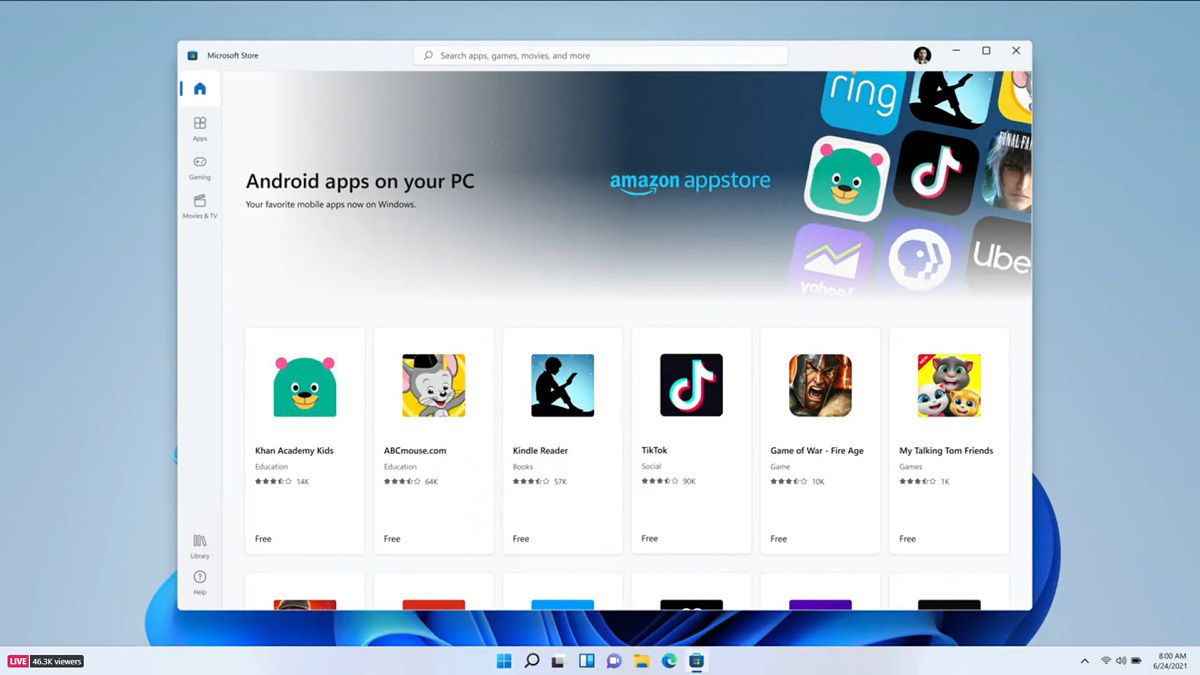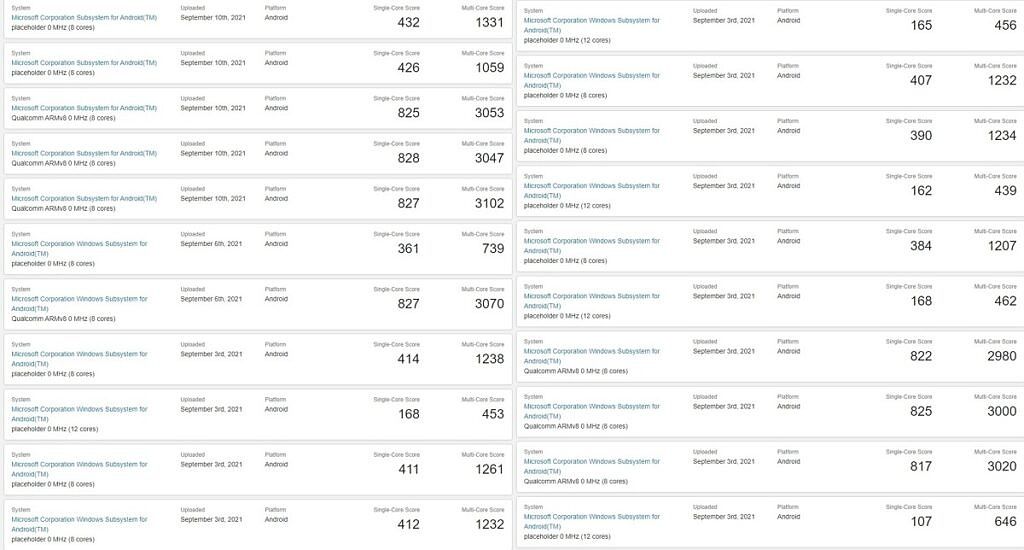Newly-surfaced benchmarks have given us a first look at the performance of the Windows Subsystem for Android. Microsoft announced Windows 11 would support Android apps when it first announced the new operating system, but there's a lot we still don't know. This is going to be enabled by the Windows Subsystem for Android, which is based on the Windows Subsystem for Linux added in Windows 10. That means it's running through emulation, and emulation usually comes at the cost of performance.
Microsoft hasn't shared any information about how Android apps will run, and we haven't been able to try it ourselves yet, so until now, it was impossible to know how Android apps would perform on Windows. With the benchmark scores spotted by Twitter user @AlurDesign (via MSPowerUser), we get our first glimpse at the performance of the Windows Subsystem for Linux. The results - which you can see below - vary significantly, but they are promising.
There's a huge disparity between some of the results, but the higher end of the results has single-core scores hovering around 820, with multi-core scores at around 3,000. That would put performance in line with phones powered by the Qualcomm Snapdragon 865, which would indeed be great. This is a flagship processor that powers the Samsung Galaxy S20 family (in some markets), the OnePlus 8, OPPO Find X2 Pro, and other flagship phones from 2020. You can find the full list of scores for Windows Subsystem for Android, and compare that to the top Android benchmarks to see for yourself.
However, the variation in results may be a bit concerning. There's no way to identify what hardware these benchmarks were running on because they were being emulated. Some of the listings indicate a Qualcomm processor, while others only have a placeholder name. Do note, however, that the Qualcomm processor name is likely also fictional since this is all happening through emulation. Additionally, clock speeds are all 0MHz. One trend that's easily observable is that the results associated with this would-be Qualcomm chip are the ones that have the highest scores. There is a chance that the placeholder scores are from earlier builds of the software, before optimizations were made. You can see that even though some of the devices indicate 12 processing cores, they still score far below other 8-core processors.
Regardless, performance is also going to vary with the hardware you have, and there's no telling what's the real CPU running these benchmarks. If you need a desktop-level CPU to get this kind of score, that means performance may not be great if you have a laptop, especially if it's an ultrabook.
These benchmark results started showing up about a week ago, and that could suggest Microsoft is preparing to make this available to Insiders. We've also seen the Windows Subsystem for Android show up on the Microsoft Store, another potential hint that public availability may be coming soon. Naturally, general users will have to wait a while longer, and we know the feature won't be available when Windows 11 launches on October 5.


